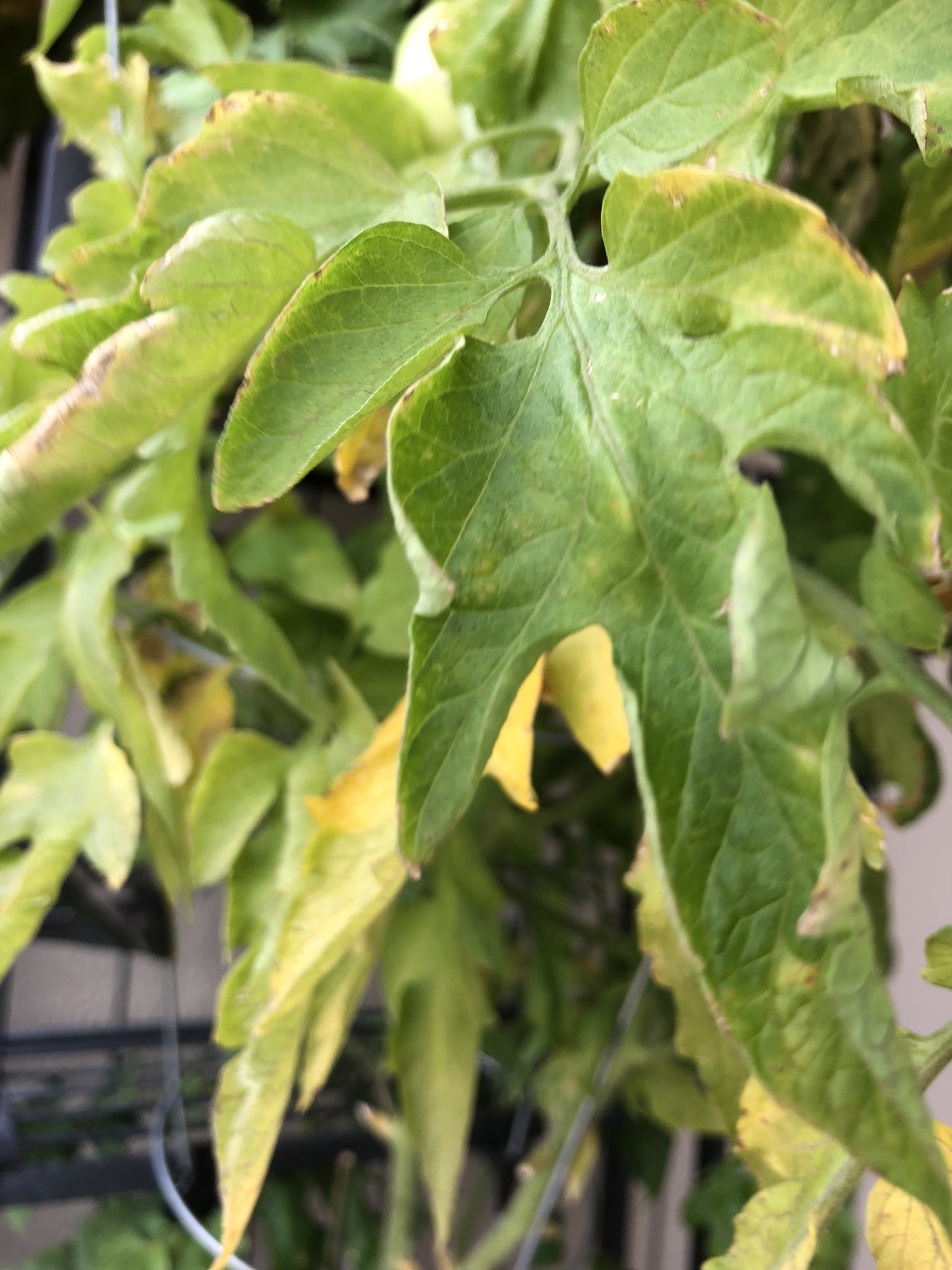Ever wondered why your tomato plants sometimes don’t quite make the cut? Well, today we’re exploring on the topic “potassium deficiency in tomato plants.” It’s a real game-changer in the gardening realm, and we’re about to uncover the nitty-gritty details, from symptoms to solutions. So, grab your gardening gloves and let’s get our hands dirty!
Table of Contents
Understanding Potassium Deficiency in Tomato Plants
So, what exactly is potassium, and why do tomato plants need it? Potassium is one of the essential macronutrients that plants, including tomatoes, crave. It’s like their version of a protein shake, but for overall health. It’s responsible for a whole bunch of critical functions, from regulating water balance to improving disease resistance. When your tomato plants lack potassium, it’s like skipping leg day at the gym—they become weak and vulnerable.
Symptoms of Potassium Deficiency in Tomato Plants

Potassium deficiency in tomato plants can be as sneaky as a cat burglar in the night. It doesn’t always show up all at once, making it harder to detect. But don’t worry; we’ve got your back. Here are some telltale signs that your tomatoes might be running low on potassium:
- Yellowing leaves starting at the edges and tips. Think of it as the plant’s way of waving a yellow flag.
- Oddly shaped fruit with dark, sunken areas and uneven ripening. They look like they’re auditioning for a tomato reality show.
- Reduced Flowering: Fewer flowers, leading to decreased fruit production.
- Leaf Curling: Leaves can exhibit curling or twisting, and leaf margins may appear scorched.
- Stunted growth and smaller overall plant size. It’s like the plant’s way of saying, “I’m not feeling it today.”
- Increased vulnerability to pests and diseases. The tomatoes turn into a buffet for garden critters.
Causes of Potassium Deficiency
Alright, we’ve identified the symptoms. Now, let’s put on our detective hats and uncover the root causes of potassium deficiency in tomato plants:
- Poor soil quality: If your soil doesn’t have enough potassium to begin with, your tomatoes are in for a rough ride.
- Over-fertilization: Believe it or not, too much of a good thing can be bad. Excessive use of certain fertilizers can lock up potassium in the soil, preventing the plants from absorbing it.
- Imbalanced pH levels: Tomato plants prefer slightly acidic soil. If your pH levels are way off, it can affect potassium availability.
- Heavy rainfall or over-irrigation: Mother Nature can sometimes be a bit too generous with the watering can, washing away potassium from the soil before the plants can take it in.
Tackling Potassium Deficiency
Time to roll up our sleeves and get down to business. How do we tackle potassium deficiency in tomato plants? Let’s break it down:
- Choosing the Right Fertilizer: Opt for fertilizers with a balanced nutrient profile, including potassium. Look for something like a 10-10-10 or similar, with equal amounts of nitrogen, phosphorus, and potassium.
- Soil Testing and Amendment: Get your soil tested to understand its potassium content. If it’s lacking, you can amend it with potassium-rich materials like potash.
- Proper Irrigation: Be mindful of your watering routine. Don’t overdo it, as excess water can flush away potassium. Ensure your plants get consistent and adequate moisture.
- Maintain Optimal pH: Keep your soil’s pH level between 6.0 and 6.8 to promote potassium absorption.
- Mulch It Up: Mulching not only helps with water retention but also keeps the soil temperature steady, which is great for potassium uptake.
Potassium-Boosting Techniques
Now, let’s dig a little deeper and explore some specific techniques to give your tomato plants that much-needed potassium kick.
- Banana Peel Bonanza: Banana peels are rich in potassium. Simply chop them up and bury them near the base of your tomato plants. As they decompose, they release potassium into the soil.
- Compost Love: Incorporate potassium-rich compost into your garden bed to gradually increase potassium levels.
- Epsom Salt Elixir: An occasional spray of Epsom salt (magnesium sulfate) can do wonders for potassium uptake.
The Proof is in the Tomato… or Pudding
So, does all this potassium talk actually make a difference? You bet your sweet tomatoes it does! When you address potassium deficiency, you’ll notice some remarkable changes in your tomato garden:
- Healthier, lusher foliage: Say goodbye to those sad, yellow leaves, and hello to vibrant greenery.
- Bigger, tastier tomatoes: Your fruit will ripen evenly, with no weird dark spots or off shapes.
- Stronger disease resistance: Your tomatoes will be like little soldiers, ready to fend off pests and diseases.
- Increased yield: With the right potassium levels, your plants will produce more tomatoes for you to enjoy.
Conclusion – Potassium Power for Your Tomatoes
There you have it, folks—potassium deficiency in tomato plants is no match for your newfound knowledge. You’ve learned what potassium does for your tomato plants, how to spot the signs of deficiency, and the steps to take to ensure your tomatoes are getting their daily potassium fix.
Just like we need our vitamins and nutrients, our tomato plants need potassium to thrive. By maintaining the right balance, you’ll be rewarded with healthier, tastier, and more bountiful tomato harvests. So, get out there, give your tomatoes some potassium love, and watch them flourish. Happy gardening!
